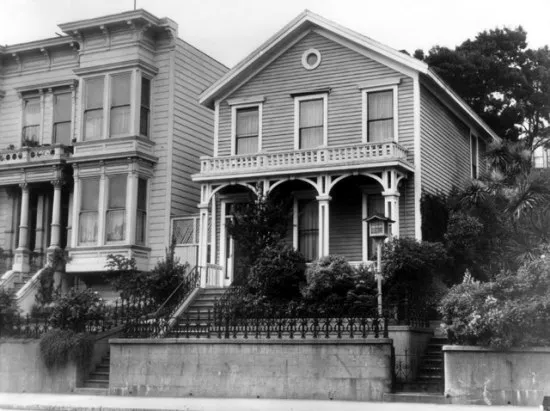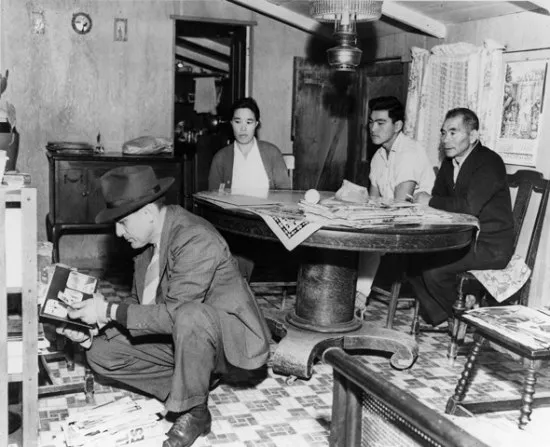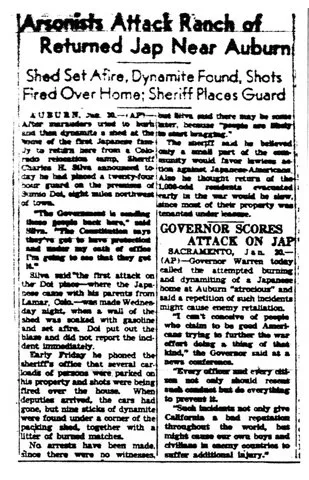NATIONAL MUSEUM OF AMERICAN HISTORY
What Happened to Japanese American Houses During Incarceration?
As the federal government evicted and incarcerated Japanese American citizens living in the western United States, their homes were neglected, ransacked, and looted
:focal(275x198:276x199)/https://tf-cmsv2-smithsonianmag-media.s3.amazonaws.com/blogging/featured/suitcase.jpg)
In 1983, the United States Commission on Wartime Relocation and Internment of Civilians (CWRIC) asked, "What if vandals broke into your home, sprayed graffiti, and ransacked your property simply because of race, gender, or religious affiliation?" For some Japanese Americans during the 1940s, this was not a hypothetical question. The CWRIC's "what if" question really happened, as the nine-member commission explored in its investigation of the effects of Japanese American incarceration during World War II.

This year marks the 79th anniversary of Executive Order 9066, a document that President Franklin D. Roosevelt signed in 1942, two months after Japan's attack on Pearl Harbor. The order resulted in the incarceration of 75,000 Americans of Japanese ancestry and 45,000 Japanese nationals in prison camps across the country, many being relocated far from home.
The findings of the CWRIC, titled "Personal Justice Denied," confirmed that as the federal government evicted and incarcerated Japanese American citizens living in the western United States, their homes were neglected. Left untended, formerly lively domestic spaces were ransacked, defaced, and even looted while homeowners made do in the crowded barracks of incarceration camps.
In her 1993 book Jewel of the Desert, historian Sandra C. Taylor explains that these evicted citizens rushed to sell businesses and the possessions they could not carry in a single suitcase. While they were away from home, people in their communities—often former neighbors— looted Japanese households along the West Coast.

Concerns for their homes and possessions left behind must have weighed on the minds of incarcerated Japanese Americans—before departure, some of them had already seen the disrespect that could befall many of their homes. During the eviction process, for example, police action sometimes imperiled homes and possessions. Several people speaking in oral histories in John Tateishi's 1999 work And Justice for All detail the experience of these evictions and the fate of many their households. Before his incarceration to the Minidoka camp, Chiye Tomihiro explained that authorities arrested her father and "ransacked the apartment, taken a lot of things, and left the door open, unlocked." In this case, police action literally opened the door for looters.
After an average of three years of incarceration, many Japanese Americans returned to their homes upon their release. While incarcerated, their homes remained unprotected from those who wished to do harm. According to the CWRIC, several returning inmates "found their homes or farms ill-cared-for, overgrown with weeds, badly tended or destroyed [while] one person reported finding strangers living in his former home." When Tomoye Takahashi and her family returned home, she explained, "I just stood there and wept. It was the greatest happening; I was finally coming home." However, her relief wore off quickly. Taylor explains in Jewel of the Desert that the Takahashis found their locked basement storage room—where the family stored special possessions, including jewelry, family heirlooms, photos, wedding gifts, kimonos, and other sentimental items—burglarized.

Even some homes and belongings of Japanese American veterans who fought in World War II faced sad circumstances. Injured in June 1944 while serving in Italy as a member of the 442nd Regimental Combat Team, Wilson Makabe returned to the West Coast and "learned that someone had set fire to our house in Loomis, [California]," according to And Justice for All. Joe Takeda arrived back to his Santa Clara County home in California and faced assailants dousing his home in gasoline and firing shots at his vehicle, according to Jewel of the Desert. Police reported finding empty gasoline containers, liquor bottles, and severed telephone lines at Takeda's home.
Pictured above, Iku Tsuchiya's small suitcase held her most treasured household possessions, as the federal government evicted her from her home. Inmates could carry only pieces of a household with them to the camps, leaving the majority of their belongings behind. According to author Michi Nishiura Weglyn in Years of Infamy: The Untold Story of America's Concentration Camps, a postwar survey estimated that 80% of goods and property stored with private, non-government entities were ransacked, stolen, or sold. However, some homes survived the turmoil. Former Topaz inmate Donald Nakahata returned to his home at 2092 Pine Street in San Francisco, California, bluntly stating that "The house is still there," as recounted in And Justice for All. Though many Japanese American families faced devastation upon returning home, they rebuilt ravaged households, families, and fractured livelihoods.
It is clear that people's lives remain imbued in these extant spaces, no matter how much time and place leave their marks on a home.
Learn more about the experiences of Japanese Americans during World War II in the museum's exhibition Righting a Wrong: Japanese Americans and World War II.
The exhibition was generously supported by the Terasaki Family Foundation, with additional assistance from the Japanese American Citizens League and AARP.
